Residents on Okinawa prayed for peace and remembered their loved ones Tuesday on the 75th anniversary of the end of one of World War II’s deadliest conflicts, the Battle of Okinawa, on the southern Japanese island that still has a heavy US troop presence.
At the ceremony held to remember more than 200,000 people, many of them civilians, who died in the fighting near the war’s end, Okinawa Governor Denny Tamaki said the tragic history must be remembered accurately and handed down to younger generations.
Today, many people live in places of conflict, or face poverty, discrimination and environmental pollution, and the fear and economic impact from the coronavirus have further divided societies, he said. It’s more important than ever for everyone to tolerate differences, trust each other and cooperate, he said.
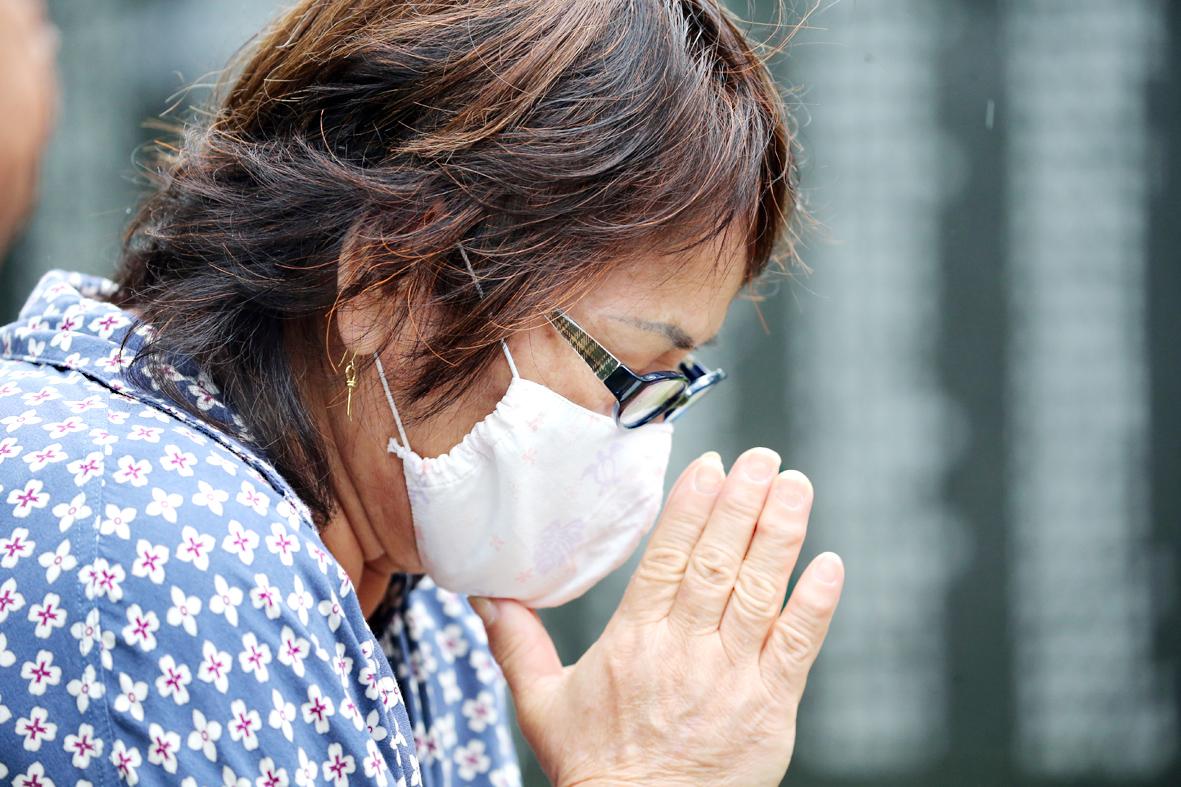
Photo: EPA-EFE
“We must gather our wisdom and push forward to achieve nuclear weapons ban, war renouncement and lasting peace,” Tamaki said.
Resentment over the continuing heavy US troop presence runs deep on Okinawa.
“Since the end of the war, even when Okinawa was deprived of human rights and self-governance under the US occupation, we have steadily walked on the path of reconstruction and development while protecting our culture and sincerity we inherited from our ancestors,” Tamaki said.
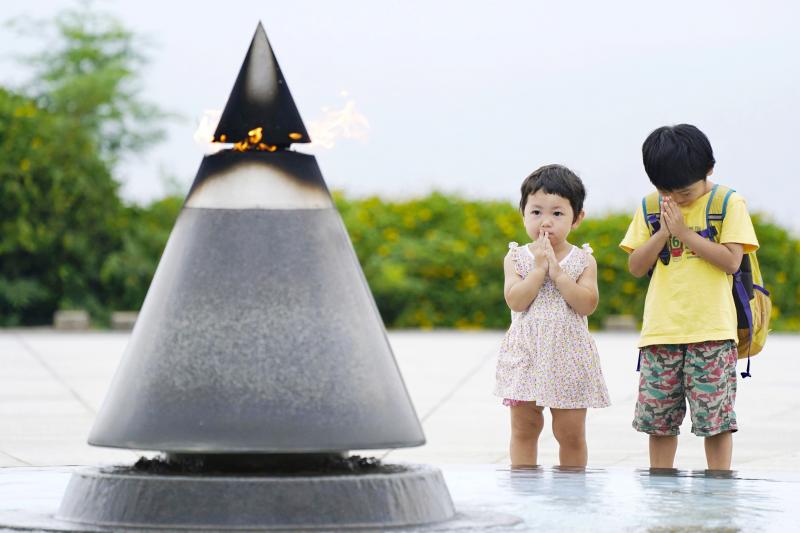
Photo: AP
The majority of US military facilities in Japan are on Okinawa, and more than half of the about 50,000 US troops based in Japan.
Okinawans continue to be affected by base-related crime, pollution and noise 75 years since the end of the war, Tamaki said.
Okinawa has asked the central government to do more to reduce their burden, and Prime Minister Shinzo Abe’s government repeatedly says it is mindful of their feelings, but the changes are slow to come. Many Okinawans also want a revision to the Status of Forces Agreement with the United States, which gives American military personnel certain legal privileges.
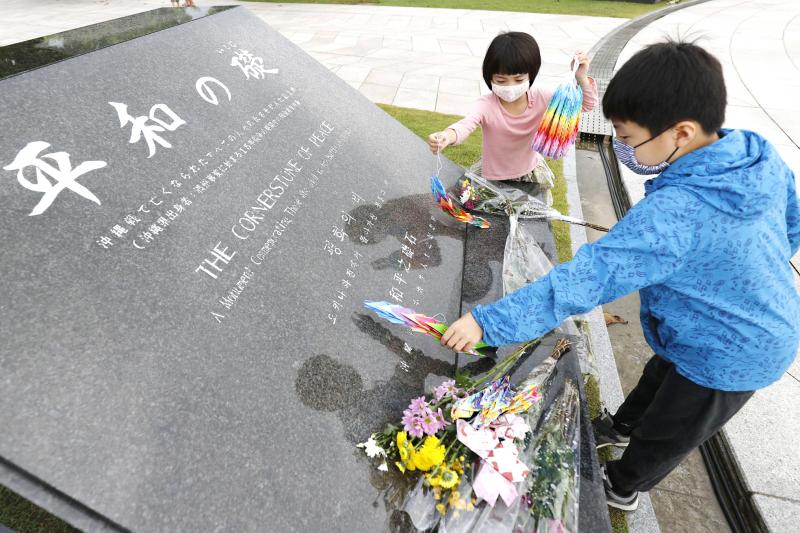
Photo: AP
A key disagreement is a decades-old plan to relocate a US Marine Corps air station from the densely populated area of Futenma in southern Okinawa to less-crowded Henoko on the east coast. Many Okinawans want the air station to be moved off the island instead.
Tamaki renewed his pledge Tuesday to protect the environment at Henoko and block the relocation.
Many Okinawans consider Tokyo’s postwar defense stance under the Japan-US security alliance to have been built on Okinawa’s sacrifice, dating to the US confiscation of Okinawan land after Japan’s World War II defeat.
The dispute over the Futenma relocation also reflects centuries-old tensions between Okinawa and the Japanese mainland, which annexed the islands, formerly the independent kingdom of the Ryukus, in 1878.
Okinawa was Japan’s only home battleground in World War II, and the island remained under US rule for 20 years longer than the rest of Japan.

May 11 to May 18 The original Taichung Railway Station was long thought to have been completely razed. Opening on May 15, 1905, the one-story wooden structure soon outgrew its purpose and was replaced in 1917 by a grandiose, Western-style station. During construction on the third-generation station in 2017, workers discovered the service pit for the original station’s locomotive depot. A year later, a small wooden building on site was determined by historians to be the first stationmaster’s office, built around 1908. With these findings, the Taichung Railway Station Cultural Park now boasts that it has
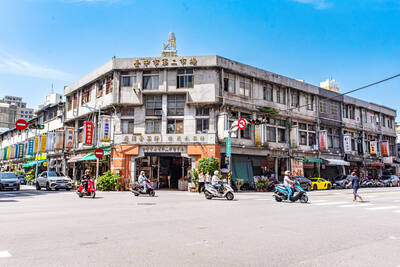
Wooden houses wedged between concrete, crumbling brick facades with roofs gaping to the sky, and tiled art deco buildings down narrow alleyways: Taichung Central District’s (中區) aging architecture reveals both the allure and reality of the old downtown. From Indigenous settlement to capital under Qing Dynasty rule through to Japanese colonization, Taichung’s Central District holds a long and layered history. The bygone beauty of its streets once earned it the nickname “Little Kyoto.” Since the late eighties, however, the shifting of economic and government centers westward signaled a gradual decline in the area’s evolving fortunes. With the regeneration of the once

In February of this year the Taipei Times reported on the visit of Lienchiang County Commissioner Wang Chung-ming (王忠銘) of the Chinese Nationalist Party (KMT) and a delegation to a lantern festival in Fuzhou’s Mawei District in Fujian Province. “Today, Mawei and Matsu jointly marked the lantern festival,” Wang was quoted as saying, adding that both sides “being of one people,” is a cause for joy. Wang was passing around a common claim of officials of the People’s Republic of China (PRC) and the PRC’s allies and supporters in Taiwan — KMT and the Taiwan People’s Party — and elsewhere: Taiwan and
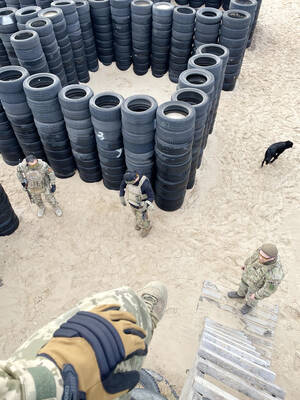
Even by the standards of Ukraine’s International Legion, which comprises volunteers from over 55 countries, Han has an unusual backstory. Born in Taichung, he grew up in Costa Rica — then one of Taiwan’s diplomatic allies — where a relative worked for the embassy. After attending an American international high school in San Jose, Costa Rica’s capital, Han — who prefers to use only his given name for OPSEC (operations security) reasons — moved to the US in his teens. He attended Penn State University before returning to Taiwan to work in the semiconductor industry in Kaohsiung, where he